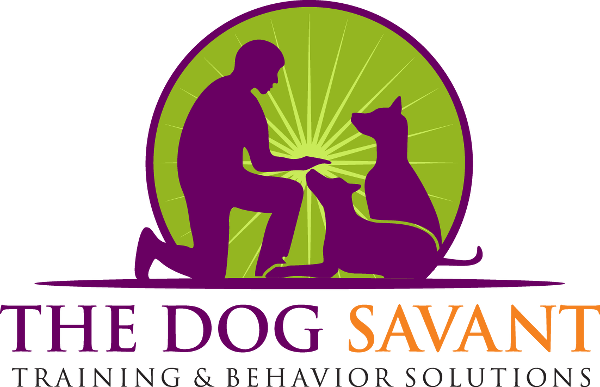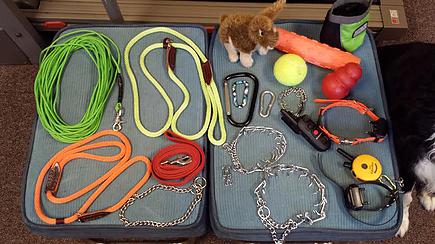I would like to take the time now to go over some useful training tools when working with dogs who are in need of an attitude adjustment. Like any craftsman, I have learned to become familiar with all the various “tools” available to someone in my profession and to keep a full toolbox. More importantly, I have learned to know which tool (or combination of tools) is most appropriate for each individual dog and owner I am working with at any given time. Although the common themes of energy, experience and understanding must always be the motivation for our communication with our dogs, what tool may work with one dog may not be right for another.
Once a dog finds what they are looking for within you, you will not have to use man made instruments to communicate the correct energy of understanding anymore. Later in the book, therefore, I will explain how to phase your dog out of relying on the training equipment and intensive training to maintain good behavior. In the beginning though, we are going to come off as just too human. This is why we have to use a “translation device” to help us along at first until you learn how to tap into your inner pack leader! The following is a table with a rundown of some of the tools available to help train your dog with behavior problems and/or basic training. I will list the pros and cons of each. Many of these have helped my clients establish wonderful relationships with their former problematic dogs. By learning which tool(s) would be most appropriate in helping you achieve your training goals, you can become quite efficient in opening up the line of communication between you and your dog.
The Right Tool for the Job:
If you feel a certain piece of training equipment would be the right tool to help you communicate with your dog, then it is a good idea to get to really know about it. You need to master how to use it in communicating with your dog by taking some time to practice so it becomes a natural extension of yourself. Doing research on the equipments proper use is a great idea too. There are numerous books, videos and websites specifically devoted to the subject of many of the individual training items I listed. I’ve never seen a great carpenter who wasn’t confident in their hammer, so it is essential to learn how to master whatever training tool you choose. You must learn to become confident in its ability to help bridge the communication gap between you and your dog!
Time to Hang up the Tool Belt:
As with is the theme of all of my talk in regards to dog training equipment. Any training collars, leashes, harnesses, treats, etc. should gradually be phased out after consistent and effective use. This is so that your dog responds to you as an individual in a practical way and, not because of what you are holding, bribing, or correcting them with.
Brett Endes, The Dog Savant is a professional dog trainer and author with over 20 years experience specializing in problem behavior and puppy development counseling. The Dog Savant hosts a weekly podcast and is currently developing a web-based show to promote his message of canine behavior awareness. Brett takes a unique approach to dog behavior like no other trainer. His methods are based on psychology and principals of meditation along with a dog’s natural way of communication. Brett has been affectionately called, “The man with a dog’s brain”. He is available for private consulting of individual clients and speaking engagements in the greater Los Angeles area and worldwide. To learn more about Brett or for contact info please visit his website: dogtrainingLA.com






